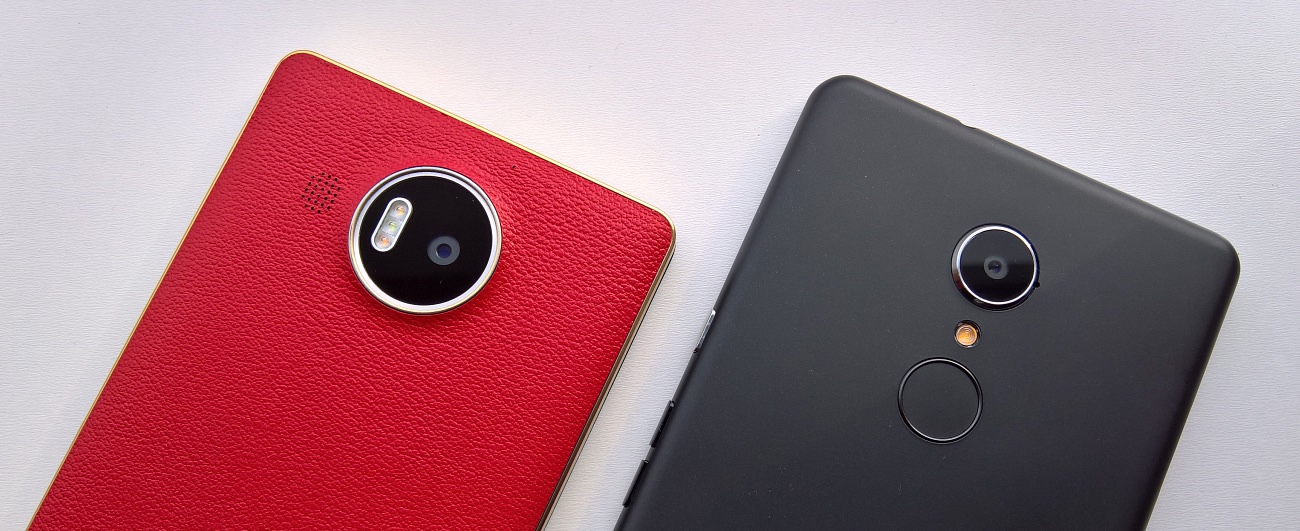
Notes:
- I was shooting in early evening light, near dusk, but if anything that makes the test more valid, since this is a test of the amount of light allowed in while in video mode for each phone, of the handling of light and dark, of low noise (hopefully) and of stabilisation under tricky circumstances. If there's enough interest, I'll take the X3 off to a more glamorous location and shoot some more formal tests.
- After many past tests, I'm losing confidence in digital stabilisation (EIS) as a technology. It's telling that Microsoft chooses to leave this defaulted to 'off' - footage with digital stabilisation turned on is indeed super smooth, but there are also 'wobble-vision' artefacts, where items in the field of view get distorted and final footage looks obviously artificial. In the Lumia 950 XL's case the Optical Image Stabilisation is so good that there's really no need to add an artificial extra layer of compensation. In contrast, the Elite X3 probably does need EIS, but here I wanted to explore footage that was as crisp and undistorted as its technology could manage. (We'll come to a OIS vs EIS shootout in another feature.)
- Both smartphones were strapped to a special jig, to make sure that their cameras received the same vibration inputs, with my hand trying to hold the jog midway between the two camera units.
- This quick test was done AFTER the firmware update which hit the X3 a few days ago. And yes, the camera unit is still terrible - you still can't take a photo with flash. Unbelievably.
There's commentary as I go along, first on the Lumia 950 XL track and then the Elite X3 track. See what you think!
Make sure you either maximise the video in place or click through to YouTube and watch it there. In either case, it was shot at 1080p, so that's what you'll need for best effect. Also turn up your speakers to hear differences in the captured audio:
Some observations then:
- Overall clarity is almost always better in the Lumia 950 XL footage, and often dramatically so. This will be down to the ZEISS optics and OIS, meaning that there's a lot less digital rubbish for the video processing and encoding algorithms to sort through. In places the X3 footage was so degraded that I had to keep going back to the hardware and check I hadn't put a fingerprint over the camera glass (I hadn't)...
- Colours were generally more accurate in the 950 XL footage - look at the colour of the grass in the opening ten seconds, etc.
- Focussing was generally faster and more accurate in the 950 XL footage (though the X3 beat it in a few places).
- The audio soundtrack was much crisper in the 950 XL footage, though without much bass and with greater wind susceptibility. The X3's audio was much quieter (I doubled its volume for the edit above, for ease of watching/listening), though did have good bass. But it was spoilt by some digital noise artefacts and it's not clear where these were coming from.
The footage from the Lumia 950 XL isn't perfect, I'd still much rather have a Lumia 1020 or even 1520. But the 950 XL's optics and OIS give it a big edge in terms of video capture, over the Elite X3.
As mentioned at the top, there's little reason for a 'enterprise' smartphone to maintain any excellence at video capture, so I'm not surprised that it's low down on HP's list of issues to address. Maybe it's even better than we had any right to expect, given the X3's positioning?
Anyway, I'll be revisiting video capture in the coming months no doubt. Do shout in the comments if you have particular comparisons, tests and scenarios you'd like to see me tackle!
PS. Thanks as usual to Clove for the loan of the retail HP Elite X3.
